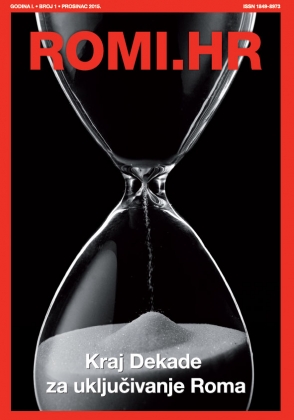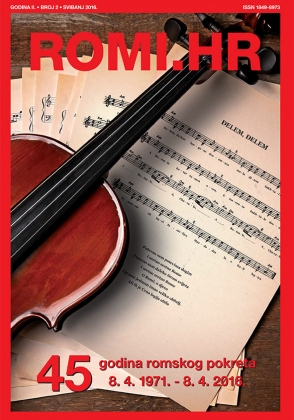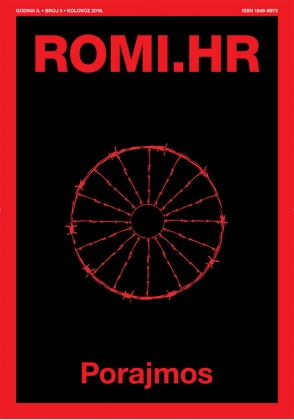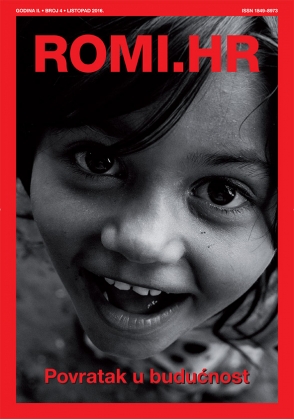Vijesti ROMI.HR
/ © European Union 2016 - European Parliament (Attribution-NonCommercial-NoDerivatives CreativeCommons licenses creativecommons.org/licenses/by-nc-nd/4.0/)
© European Union 2016 - European Parliament (Attribution-NonCommercial-NoDerivatives CreativeCommons licenses creativecommons.org/licenses/by-nc-nd/4.0/) The recent release of the new EU strategy for Roma is a call for Member States to acknowledge the severity of the situation faced by this minority in Europe. While the steps taken include enhanced inclusion, attention to real equality and more representation, doubts remain given the lack of mechanisms in place to ensure implementation really happens. With a second wave of the Covid pandemic currently hitting Europe, the Roma are yet again in a particularly vulnerable position. Getting this strategy right could mean a lot.
“Simply put, over the last ten years we have not done enough to support the Roma population in the EU. This is inexcusable. Many continue to face discrimination and racism. We cannot accept it. Today we are relaunching our efforts to correct this situation, with clear targets and a renewed commitment to achieve real change over the next decade.”
Věra Jourová, Vice-President for Values and Transparency
On 7 October, the European Commission (EC) released its 10-year strategic plan designed to promote further integration of Roma communities throughout Europe. This plan aims to continue the efforts of the EU Framework for national Roma integration strategies up to 2020, adopted by the EC in 2011. The Framework provided guidelines for the development of national strategies in Member States in order to address socio-economic imbalances between Roma and non-Roma, with special attention to four main pillars: education, health, employment and housing. Promoting equality in these key areas is a basic pre-requisite for effective integration of Roma communities in society.
Despite some relevant differences across countries, the EC recognises that ''overall progress in Roma integration has been limited over the past 10 years''. While some improvements have come particularly in education, serious issues remain with regards to growing unemployment, poor healthcare access and inadequate housing conditions. Even in the face of reduced discrimination and improved public perception of Roma, anti-gypsysm, hate crime and trafficking are still widespread.
In consideration of the above, and following institutional and civil society pressure to step up the game given the on-going challenges, the EC has established seven key areas of intervention. The new plan focuses on equality, inclusion and participation, as well as the big four - education, health, employment and housing. The EC has also acknowledged the importance of tracking progress appropriately, and is proposing quantitative headline targets for each of the seven areas. Some of the most ambitious goals include a 50% reduction of both general and children poverty, cutting the life expectancy gap between Roma and non-Roma by half and increasing the rate of Roma employment to 60%.
These criteria are a visible attempt to increase accountability and strengthen national commitment to solving Roma issues. The EC also encourages countries to include in their national strategies specific tools and funding towards achieving socio-economic goals, emphasising the need to boost Roma participation in the policy-making process. Countries with significant Roma populations (well over 1%) are especially encouraged to consider the importance of equality and inclusion not just as fundamental rights but also in light of their economic potential. Implementation reports every two years are also destined to measure progress and monitor the effectiveness of national strategies and their real impact on Roma communities.
These developments show a commitment from European authorities to speed up the process of inclusion of Roma as citizens with equal rights to those of the majority. It calls on Member States to present their Roma national strategies by September 2021 and to identify how national and EU funds and financial instruments will be used for Roma.
At the same time, it seems pertinent to acknowledge the document lacks a legally-binding mechanism that truly addresses the urgency of the situation. Countries remain under no obligation to secure a part of their national budget towards Roma development. Moreover, the long-lasting nature of certain Roma issues, particularly those related to high unemployment, could make some of the EC's objectives seem over-optimistic. In a context of precarious work, rising unemployment and negative growth in the EU, goals for such drastic reductions in Roma unemployment may be accused of lacking contextual realism. Even more so without a legally-binding mandate to ensure full Member States' commitment.
Another issue that calls for attention in the new plan is the lack of reference to Roma identity and language. The word 'identity' is mentioned twice in the 22-page document; the word 'language' is not even present. Efforts to promote Roma integration without a clear emphasis on these components risk the loss of certain key features of Roma culture, which have the potential to derive in assimiliationist policy-making and endanger inter-culturalism.
While most of these countries have exhibited a sense of goodwill and openly collaborated in the process of advancing the Roma cause, the limited results over the past 10-year period are of considerable concern. Given the precarious situation of many Roma in Europe, now exacerbated by the Covid crisis, some worry this strategy might be insufficient to effectively deal with the many challenges Roma continue to face today.













